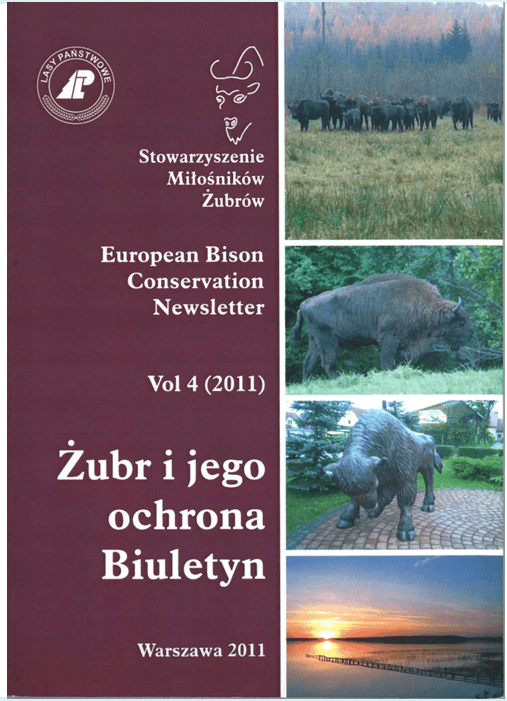Taxonomic and faunistic study of chewing lice from European bison and other ungulate mammals in Poland
Keywords:
chewing lice, ungulates, mallophagosisAbstract
Specific chewing lice from European bison and some selected species of common European ungulate mammals – cattle, horses, goats, roe deer, red deer, were examined. The faunistic research was on four species of chewing lice, including Bisonicola sedecimdecembrii from European bison (prevalence – 46%, mean intensity – 11 specimens), Bovicola bovis from
cattle (29%, 5), Bovicola caprae from goat (17%, 75), Werneckiella equi from horse (4%, 76). Chewing lice from the examined animal species showed topographic specificity on their hosts and preferred the body sides (in European bison) or the neck and back area (in the other hosts). Individual species were characterized by distinct seasonal dynamics, and the greatest intensity
of infestation was usually observed in winter. The morphological studies included seven species of chewing lice: Bisonicola sedecimdecembrii, Bovicola bovis, B. caprae, B. longicornis, Damalinia meyeri, D. ovis, Werneckiella equi. Chewing lice of ungulate mammals have considerable morphological similarity, however, the range of variation of morphometric traits
and differences in body proportions are significant.
Downloads
Published
How to Cite
License
Copyright (c) 2011 Joanna N. Izdebska, Sławomira Fryderyk

This work is licensed under a Creative Commons Attribution 4.0 International License.





